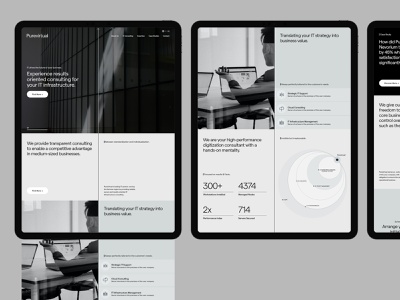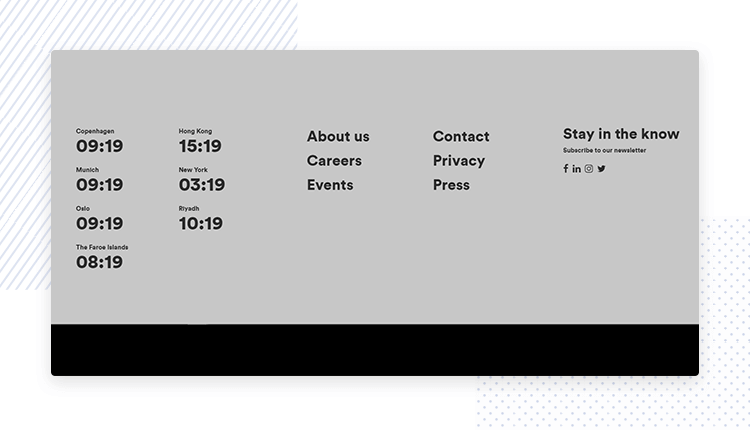
Generative or qualitative research is a method of qualitatively analyzing human behavior and using observation. This research aims at uncovering unknowns about the preferences, lifestyle, needs, and interests of a person. This information is useful for companies when they are trying to find solutions to customers' problems or develop new products.
Generative research is usually used in the early stages of product development. Focus groups, surveys, user interviews, and other methods can all be used in a generative research program. Although each method has its advantages and disadvantages, the best way to solve real-world problems is to use a combination of them all. Many organizations become so involved in designing a product or service that their eyes forget to view the problem objectively. However, a little research can go a long way toward improving the odds of success.

Talking with customers is one of your best methods to learn more about them. Asking open-ended questions, and taking part in a moderated conversation can give you invaluable insights into your users' attitudes and behaviors. Not only will you be able to identify areas where your product/service can be improved, but you also have the ability to make better business decision.
Generative research offers the chance to find real-world solutions for your customers' needs. This is one of the greatest benefits. Combining this method with an evaluation methodology will allow you to validate your current designs. You may not be able to implement the solution every time, but the insights can help you move on to the next stage of your design process.
It can take the form a survey (or interview), or a field investigation. Before you start, you need to determine a methodology and recruit participants. It is also important to record your research. To help with the recording, you can use a tool such as Zoom or tl;dv.
Also, generative research should have a purpose. Some examples include discovering a better way to communicate with your customers, exposing the hidden needs of your consumers, or improving your existing products. Once you've established your objectives, you are ready to begin market research. You will need to know your target audience if you are looking to start a business, or to create a new product.

It is crucial that product development begins with the research phase. If you don't treat it seriously, your products could be canceled or become useless. You can get meaningful, useful information from the right people with the right tools that you can use to improve your design process. This approach is applicable to any project, web or app. It will help you create products that are relevant and meet the needs of your clients.
Evaluative Research is the opposite to generative. While it can provide you with the same insight about your customers, it can be a bit more complicated. Instead of conducting a simple survey you will need to conduct several usability tests to assess whether your designs work.
FAQ
How much does it cost to build a website?
The answer depends on what you are trying to achieve with your website. Google Sites is a free service that may be available if you only want to publish information about yourself and your business.
You will likely need to spend more if you want to attract people to your site.
The best option is to use a Content Management System, such as WordPress. These programs enable you to create a website in no time. The sites are hosted by third-party businesses, so there is no risk of your site being hacked.
Squarespace offers a great way to build your website. They offer a variety of plans ranging from $5 per month to $100 per month, depending on what you want to include on your site.
Which website builder should I use?
You can start small and build a solid web presence. If you have the resources and time to create a fully-fledged website, go for it. But if you don't have these resources yet, starting with a simple blog might be the best option. As you develop your website design skills, you can always add additional features.
Before you start building your website, it is important to establish a primary domain. This will provide you with a point of reference when you publish content.
How much do web developers make?
When working on a website for yourself, you'll probably earn around $60-$80 per hour. If you are looking to make more money, it is worth considering becoming an independent contractor. An hourly rate of $150-200 could be possible.
Statistics
- When choosing your website color scheme, a general rule is to limit yourself to three shades: one primary color (60% of the mix), one secondary color (30%), and one accent color (10%). (wix.com)
- It enables you to sell your music directly on your website and keep 100% of the profits. (wix.com)
- It's estimated that chatbots could reduce this by 30%. Gone are the days when chatbots were mere gimmicks – now, they're becoming ever more essential to customer-facing services. (websitebuilderexpert.com)
- In fact, according to Color Matters, a signature color can boost brand recognition by 80%. There's a lot of psychology behind people's perception of color, so it's important to understand how it's used with your industry. (websitebuilderexpert.com)
- It's estimated that in 2022, over 2.14 billion people will purchase goods and services online. (wix.com)
External Links
How To
What is Website Hosting?
Website hosting describes where visitors go when they visit a site. There are two types.
-
The cheapest option is shared hosting. Your website files reside on a server controlled by someone else. Your customers' requests travel via the Internet to your server when they visit your site. The owner of the server then hands off the request to you.
-
Dedicated hosting: This is the most costly option. Your website is located on only one server. There are no other websites sharing space on the server. Your traffic remains private.
Shared hosting is cheaper than dedicated hosting for most businesses. You can use shared hosting if the company owns the server to provide the resources required for your website.
But there are pros and cons to both options. Here are the differences:
Shared Hosting Pros
-
Lower Cost
-
Easy to Set Up
-
Regular Updates
-
It is available on many Web Hosting Companies
Shared hosting is often as cheap as $10 per month. Keep in mind, however, that bandwidth is usually included in the price. Bandwidth describes the amount of data that can be transferred over the Internet. Even if you upload only photos to your blog you might still have to pay more for large amounts of data that you transfer through your account.
Once you begin, you will soon see why you spent so much on your previous host. The majority of shared hosts offer limited customer support. Although they will help you set up your site occasionally, you are on your own once you have done that.
Look for a provider who offers 24/7 phone support. They will assist you with any problems that may arise while you're sleeping.
Cons of dedicated hosting
-
More Expensive
-
Less common
-
Requires specific skills
With dedicated hosting, all you need to maintain your website are provided. You won't have to worry about whether you're using enough bandwidth or whether you've got enough RAM (random access memory).
This means that you'll spend a bit more upfront. But once your online business starts, you'll realize you don't need any technical assistance. You'll be able to manage your servers effectively.
Which is better for my business?
The answer depends on what kind of website you want to create. Shared hosting is best for those who only need to sell products. It is simple to set up and easy to maintain. A server shared with several other sites means that you will receive frequent updates.
If you want to create a community around a brand, dedicated hosting may be the best choice. Instead of worrying about traffic, you can concentrate on building your brand.
Bluehost.com has both. Bluehost.com provides unlimited monthly data transfer, 24/7 support, free domain registration and a 30-day money back guarantee.